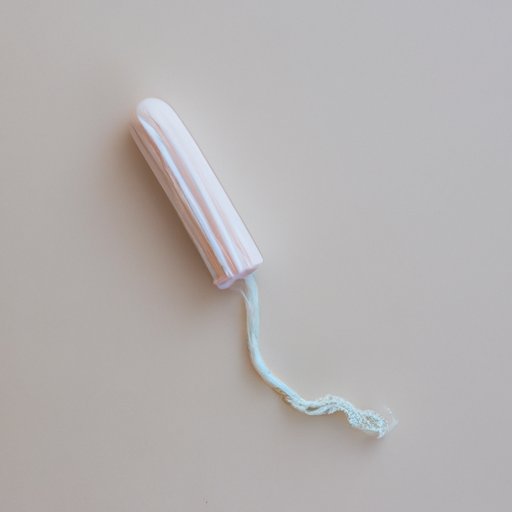
Introduction
If you are a first-time tampon user, it is normal to feel a little intimidated by the thought of inserting one. However, tampons are a safe and convenient menstrual product that can make you feel more comfortable and confident during your period. In this article, we will provide you with a step-by-step guide on how to insert a tampon, complete with tips and tricks to make the process easier. We will also address common concerns, offer age-specific advice, and discuss the environmental impact of period products.
Step-by-step guide
Inserting a tampon is a straightforward process once you know what to do. Here is a step-by-step guide on how to put in a tampon:
Step 1: Choosing the right absorbency
Choose the absorbency level that best suits your flow. The absorbency is usually indicated on the box or package.
Step 2: Wash your hands
Before inserting the tampon, make sure your hands are clean.
Step 3: Unwrap the tampon
Remove the packaging from the tampon. Do not flush the packaging or applicator as it can cause environmental damage.
Step 4: Position yourself
Assume a comfortable position, such as standing with one leg on the edge of the toilet seat, sitting on the toilet, or squatting.
Step 5: Insert the tampon
Holding the tampon by its applicator, gently insert the tampon into your vagina. Aim for a 45-degree angle towards the small of your back.
Step 6: Push the applicator
Gently push the applicator using your index finger until the applicator’s smaller tube is inside the larger tube.
Step 7: Remove the applicator
Holding onto the string, gently remove the applicator. Make sure the string is hanging outside your body.
Tips and Tricks
Here are some tips and tricks to make inserting a tampon smoother and more comfortable:
– Relax: Take deep breaths and relax your pelvic muscles. This will make the tampon easier to insert.
– Use water-based lubricants: If you experience discomfort, you can use a water-based lubricant to make the insertion easier.
– Experiment with different positions: Try different positions to find one that works for you, such as standing with one leg elevated or sitting on the toilet.
– Use an applicator: If you are having difficulty inserting a tampon, you can try using a tampon with an applicator.
– Know when to change your tampon: Change your tampon every 4 to 8 hours, depending on your flow.
– Seek help if needed: If you are having difficulty inserting a tampon, do not be afraid to ask for help from a trusted friend, family member, or healthcare provider.
Common issues and how to solve them
Here are some common issues and how to solve them:
– The tampon feels uncomfortable: If the tampon feels uncomfortable, remove it and try a smaller size or lighter absorbency tampon.
– Cannot insert the tampon: If you cannot insert the tampon, take a deep breath and relax. Try a different angle or position or try a tampon with an applicator.
– String is uncomfortable: If the string feels uncomfortable, you can try adjusting it or tucking it inside your labia.
– Tampon is stuck: If the tampon is stuck, relax and try to gently remove it. If you cannot remove it, seek help from a healthcare professional.
Alternatives to tampons
If tampons are not for you, here are some alternative period products:
– Menstrual cups: A reusable menstrual cup made of silicone or rubber that collects blood instead of absorbing it.
– Cloth pads: Reusable menstrual pads made of cloth that snap onto your underwear.
– Period underwear: Underwear designed specifically to absorb menstrual blood.
Age-specific advice
For younger readers, it is common to have concerns about inserting a tampon for the first time. Remember, it is a normal and safe process. Take your time, relax, and seek help if needed.
For older readers, it is essential to consider different stages of life, such as menopause, which can affect your menstrual cycle and require different menstrual products.
Sustainability and environmental impact
Period products can have a significant environmental impact. However, there are more sustainable options available, such as organic tampons or reusable menstrual cups. Choosing sustainable products can also benefit your health by avoiding exposure to harmful chemicals.
Safety and hygiene
Here are some essential safety and hygiene tips:
– Change your tampon every 4 to 8 hours
– Do not leave a tampon in for more than 8 hours
– Avoid using homemade or unsafe products
– Properly dispose of used products
– Avoid toxic shock syndrome by changing tampons frequently, following package instructions, and seeking medical attention if symptoms occur
Conclusion
Inserting a tampon may take practice and patience, but it is a safe and normal process. Remember to choose the correct absorbency, relax, and utilize different tips and tricks to make the process more comfortable. If you are having difficulty, seek help from a healthcare provider. Finally, always consider the sustainability and environmental impact of your menstrual products and make the right choice for you and the planet.




